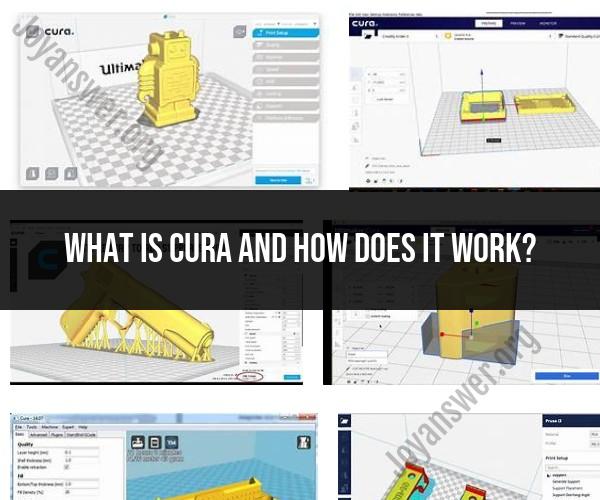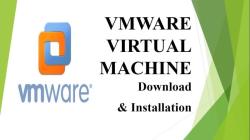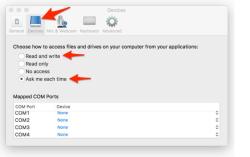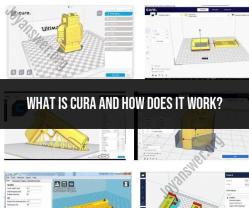What is Cura and how does it work?
Cura is an open-source, free-to-use software program primarily designed for 3D printing. It's a slicing and printing tool that prepares 3D models for printing on Fused Deposition Modeling (FDM) and other types of 3D printers. Here's how Cura works and its key functionalities:
1. Slicing Software: Cura takes a 3D model file, typically in STL format, and converts it into a set of instructions that a 3D printer can understand. These instructions are known as "G-code." The slicing process involves breaking down the 3D model into thin horizontal layers (slices), and for each layer, determining the exact paths and settings for the 3D printer's nozzle and build platform.
2. Model Preparation: Users can import 3D models into Cura's user interface. The software provides tools for arranging, scaling, and rotating models to fit the print bed and achieve the desired orientation. You can also add or adjust support structures if needed to ensure stable printing.
3. Print Settings: Cura allows users to customize various print settings, including layer height, print speed, nozzle temperature, infill density, wall thickness, and more. These settings influence the quality, speed, and material consumption of the 3D print.
4. Slicing: After configuring the print settings, users initiate the slicing process. Cura generates the G-code instructions based on the model and settings, creating a file that is compatible with the specific 3D printer being used.
5. G-Code Preview: Cura provides a visual preview of the sliced model and the toolpaths the printer will follow. This preview helps users assess the print's quality and identify potential issues, such as overhangs or gaps in the print.
6. Print Execution: Once the G-code file is generated, it can be transferred to the 3D printer, either via USB, SD card, or another communication method. The printer then follows the instructions in the G-code file to build the 3D object layer by layer.
7. Monitoring and Control: While the 3D printer is running, Cura may provide monitoring and control options, depending on the printer's compatibility and connectivity. Some printers can be controlled and monitored through the Cura interface.
8. Post-Processing: After the 3D print is complete, users can remove the printed object from the build platform, remove any support structures, and perform post-processing as needed, such as sanding, painting, or assembling multiple printed parts.
Cura is known for its user-friendly interface and extensive compatibility with a wide range of 3D printers. It is continuously updated and improved by a community of developers and users. Users can also create and share custom print profiles and plugins to extend Cura's functionality.
In summary, Cura is an essential tool for 3D printing enthusiasts and professionals. It simplifies the process of preparing 3D models for printing by providing a user-friendly interface for slicing, customization of print settings, and G-code generation, ultimately facilitating the creation of physical objects using 3D printers.









